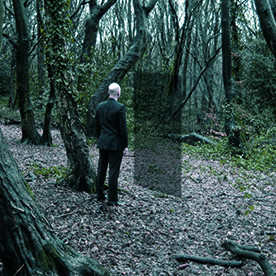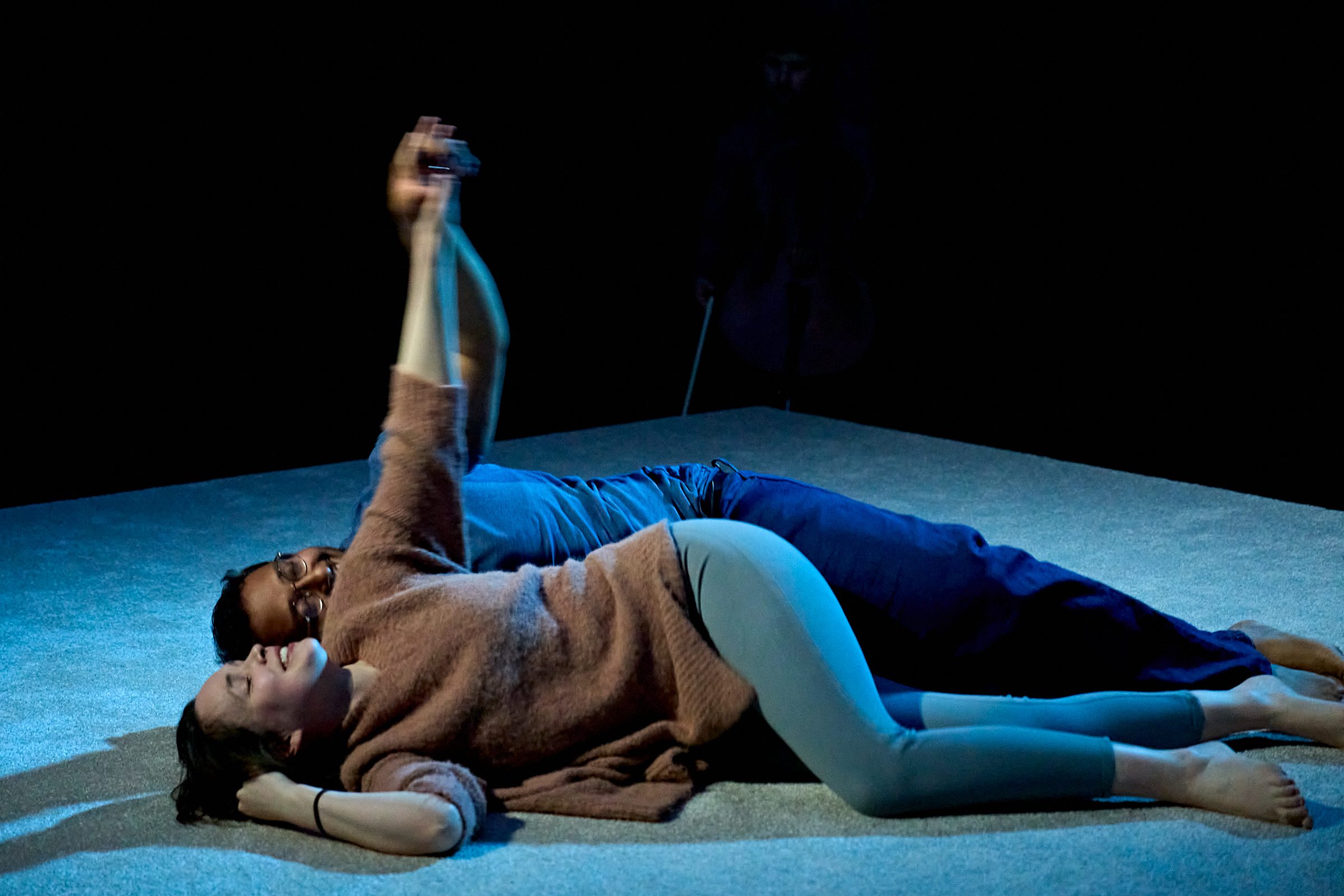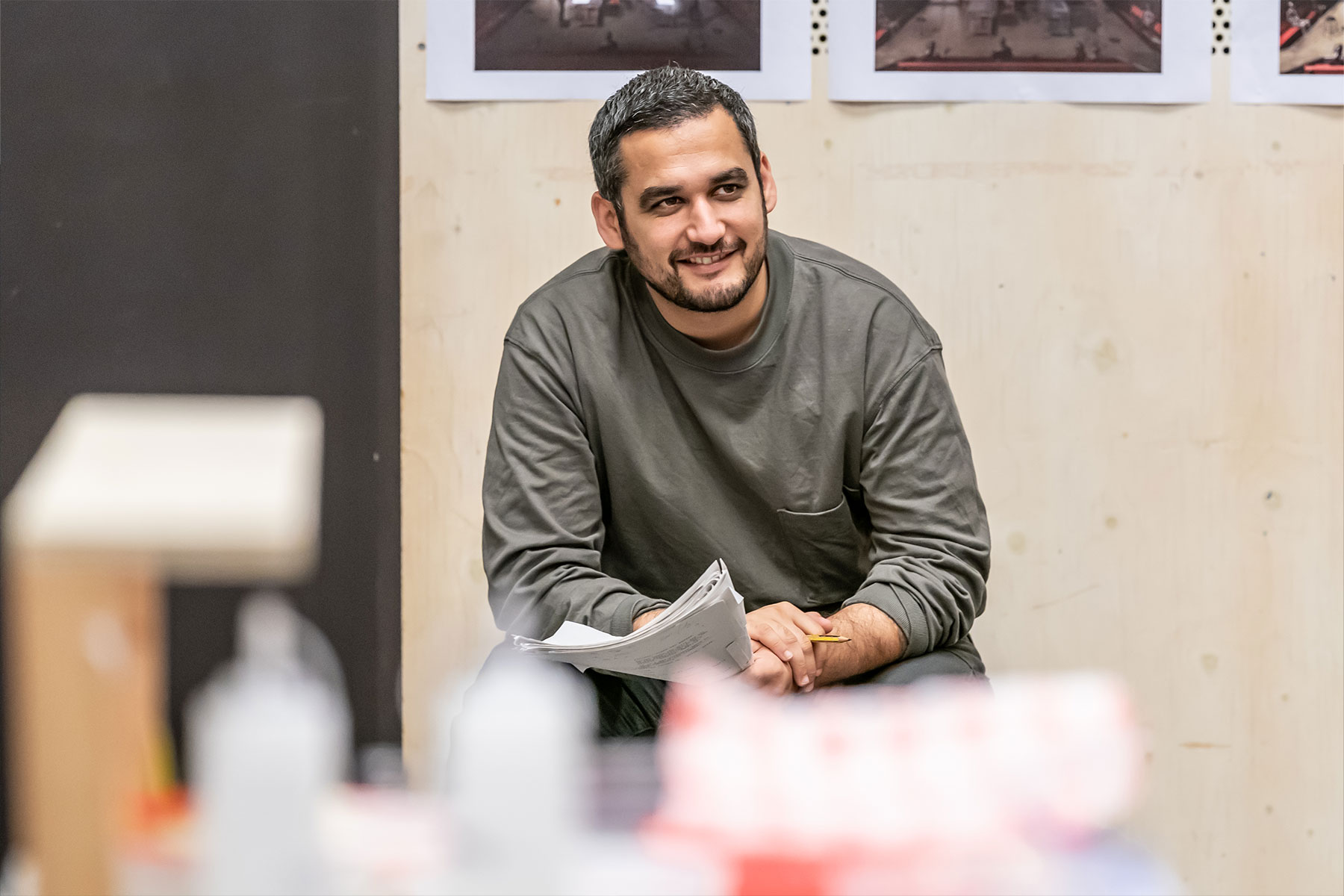The Door

In an eerily lit space, with a soundscape to match, we are informed by a disembodied voice about a phenomenon known as ‘quantum entanglement’. Einstein called entanglement ‘spooky action at a distance’ and that’s a pretty apt description of what follows during the course of this tantalising psychological drama by Cherise Cross.
According to the laws of physics (a bit of speedy internet searching has been necessary here) ‘two or more particles can interact in specific ways that leave them entangled, such that a later measurement on one system identifies the outcome of a similar measurement on the second system – no matter how far they are separated in space’. OK so far (I think). But how does this relate to the action that ensues?
John suffers from insomnia and joins a therapy group. He doesn’t get on with his fellow sufferers and disrupts the group. The therapist, Lisa, attempts to help him, even to the extent of hypnosis, which is seen as betraying the trust of the group ethic. (Not quite getting the synergy yet, but let us persevere.) It becomes clear that John has somehow lost, or been separated from, the woman he loves, Anna, which may or may not be the cause of his sleep deprivation. He then seems to confuse Lisa with Anna, seeing the therapist as the embodiment of what he has lost. Is this quantum entanglement in recognisable human form? (Still not quite clear on that.)
There is no doubt that this play is beautifully performed, especially by Philip Nightingale (John) and Adele Keating (Lisa); it is very simply and cleverly designed by Ele Slade; and the unsettling sound design is almost another character in the play – full marks there to Neil McKeown. Excellent production values, in other words, in an excellent new studio space. But what of the play? Where does it take us? It is self-confessedly based on the writer’s own battles with insomnia and asks a lot of questions which have no obvious answers, and which therefore leaves the audience puzzling mightily as they emerge from this semi-immersive experience.
We are asked to think, debate, and conclude for ourselves. All very well, but a writer who plays all his/her cards very close to the chest and values mystification above lucidity is often treading on thin theatrical ice.
This is a fascinating piece of work, but a frustrating one. As we watch the characters wrestling with their insecurities, we are drawn into their world, but we never get sufficiently to grips with it.
What is ‘the door’? Where does it lead? Does it represent the portal to the ultimate sleep, or simply the ultimate question about ourselves that we are afraid to ask? Yes, questions galore. Answers on a postcard, please.










